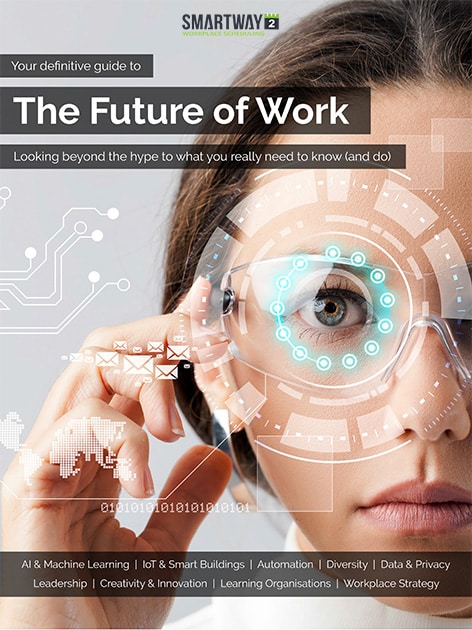
Your Complete Guide to Agile Working: Part 2
Have you read part 1 of this Agile Working series?
As we describe in detail in our free ebook on The Future of Work, the world of work is undergoing a radical shift, spurred on by technology and culture change. Many believe we’re facing a labour revolution that will completely transform how we think about our organizational structures, workplaces and roles.
In part 1 of this series, we talked about what agile working means and the benefits you could gain.
Now it’s time to explore the business case for agile working.
The business case for agile working
The Agile Future Forum (AFF) – an alliance of UK companies that includes Lloyds Banking Group, BT, Cisco, ITV, John Lewis, KPMG, Willis Towers Watson and Ford of Britain – conducted extensive research into the benefits of agile working.
Key findings include:
- Agile working saves 3-13% of workforce costs, with the potential to increase that by 3-7% with more extensive implementation.
- Black Horse Finance increased productivity by 10% and increase colleague engagement by 7% by introducing agile working practices
However, quantifying agile working ROI is no mean feat. Not least because agility impacts every aspect of work.
There are endless statistics that suggest people are more productive, motivated and likely to stick around when they have the freedom to choose how and where they work.
You could build a business case around employee engagement alone.
However, rather than attempting to boil the ocean, you might be better off considering the business case for a specific initiative or tool you’d like to implement, that will increase your organization’s agility.
For example at Smartway2, we help organizations improve space utilization. This is a straightforward way to demonstrate measurable bottom-line impact. For instance it’s common that around 30% of meeting room bookings end up going to waste, because people forget to cancel their reservations.
Most of us have been guilty of wasting valuable resources at some point. Perhaps we’ve booked the conference room for an hour every week, but when the meeting stopped, we didn’t cancel the recurring room booking.
As a result, the agility of your organization is reduced, because:
- Productivity goes down as people waste time searching for rooms
- Collaboration goes down as people can’t find a meeting room when they need it
- The employee experience is damaged by frustrations and delays
By asking people to confirm their reservations in Smartway2, you eliminate this problem, releasing unused spaces and facilities back to the workforce. You can even let someone know that the room they tried to book earlier is now free.
Quick wins like this enable you to quantify an uptick in agility – in this instance by managing your workspace more efficiently, while giving employees and contractors a better experience that lends itself to collaboration and productivity.
Another angle to explore is presenteeism…
The cost of presenteeism
Presenteeism, according to Google, is ‘the practice of being present at one’s place of work for more hours than is required, especially as a manifestation of insecurity about one’s job.’
Now let’s look at some numbers:
- A year-long phone survey dubbed the ‘American Productivity Audit’ calculated the cost of presenteeism in the US to be over $150 billion a year.
- Two studies in the Journal of American Medical Association found that productivity lost from workers experiencing depression and pain on-the-job was around 3 x greater than absence-related productivity loss attributed to the same conditions.
- A Green and Black study found the cost of ill health among UK workers was over $141 billion, with absenteeism costing $11.8 billion and presenteeism over $21 billion.
Given that people are typically the organization’s greatest cost, perhaps 90% of your cost base, shifting these dials around productivity, presenteeism and engagement can create enormous gains.
But let’s get real: if your leaders grasp the overall trends shaping our economy and global development, you really shouldn’t have to present a business case for agility.
Leaders should invest in increasing organizational agility because it’s common sense. Because they grasp that accelerating change, competition and the increasing complexity of work leaves us with no other choice.
Is agile working right for you?
Whether you think predictions about the future of work are hype or a genuine paradigm shift, it’s clear that in order to succeed we must:
- Move faster than ever before.
- Adapt to unpredictable, increasingly complex situations.
So how we achieve these new levels of speed and adaptability?
And how big a stretch is agile working for your organization?
We all know that some big iconic companies have famously reduced worker flexibility. Marissa Mayer is the obvious example, when she banned working-from-home at Yahoo.
In reality, this wasn’t a statement against agility or flexibility. She was faced with a reality whereby the company culture had eroded. Employees were mis-using the flexibility they’d been given. Too many were disengaged, working on their own projects from home on company time, or otherwise failing to be productive outside the office.
Yahoo’s internal research revealed that increasing face-to-face time in the office would bring greater benefit to certain teams than allowing them the freedom to work where and when they wanted.
The important takeaway is that Mayer’s position was not ‘anti-agility’ or a statement against allowing remote working. She was facing a far more fundamental problem around company culture.
Agility will not make disengaged, untrustworthy, free-riders into highly motivated, productive collaborators. So in order to increase agility, you need to create an environment of trust.
This involves ‘fixing’ your culture through a combination of:
- Excellent leadership.
- Hiring the right people.
Organizational change: the new normal
Assuming you’re ready to bite the bullet with agile working, how do you make it happen?
Or perhaps there’s a bigger question lurking beneath the surface: is agile working just another ‘change program’ that’s doomed to fail?
Agile working is a never-ending pursuit. It stands to reason that we should forever be striving for greater agility, because the world will only ever become more complex, demanding more flexibility and more speed.
That’s why treating agile working as a program or project creates a false state of play. It suggests that on one hand we have ‘business as usual’ and on the other hand we have change… when this isn’t the case.
Get fit, lose weight, lead like a Jedi and be agile
Consider this in human terms.
As each of us grows and adapts to the world we live in, are we undergoing a program of change? Or is this ‘normal’, perpetual growth?
Yes, we can embark on a specific change program, with a start and an end date. Perhaps we decide to do a 30-day fitness course to lose weight.
But underlying your ability to complete this kind of ‘program’ are deeper traits: motivation and self-discipline. In order to stick to your fitness regime, you must have the will to see it through.
Then there’s the fact that you wouldn’t need to go on a fitness bender if you maintained a more reasonable level of motivation and discipline as the norm. If you eat healthily and exercise regularly, your weight will probably stay in check.
The question is, whom do you think succeeds? The fad dieter and big exercise goal-setter that relies on periodic bursts of extraordinary effort to get them from A to B? Or the one who chooses to live a lifestyle that ‘naturally’ maintains a level of health and fitness?
Change programs are like fad diets. That’s why, according to McKinsey, 70% of all transformations fail.
The thing is, humans are masters of good intentions. Setting goals and planning are the easy part. Waking up every single day and taking action consistently? Not so easy.
In the moment, faced with 5am alarm heralding a 5 mile run in the dark, we hit the snooze button.
In the moment, faced with chocolate cake or an apple for dessert, we eat cake.
Organizational change is just the same. As is leadership, for that matter, if the two are even distinct.
Great leaders practice daily, healthy leadership activities that add up to an awesome leadership ‘lifestyle’. Every day they don’t see any difference when they look in the metaphorical mirror. But over time they can stand back and think ‘wow’. Check out my abs. And my team. And my awesome company culture.
The everyday lifestyle actions of great leaders are almost exclusively around communication: the way they interact with others. Including simple things, like saying hello. Asking colleagues how they are. Really paying attention to their answers. Being aware of the pressures they create and the wellbeing of those they serve.
It’s also vital that leaders fully grasp the organization’s goals and priorities, in order to weave them into day-to-day dialogue. An MIT study on 124 organizations revealed that only 28% of managers responsible for executing strategy could list 3 of their company’s top strategic priorities.
The single biggest problem in communication is the illusion that it has taken place – George Bernard Shaw.
Change programs fail because leaders lack the discipline and motivation – in other words, the mindset – to consistently, persistently do the little things that add up to the big things.
Agile working is no different.
Agile working is a mindset
Really what we’re after here is agile working as a business lifestyle. Agile working as just the way we roll.
We’ve already established that the success ingredients are exactly the same as those for staying fit and healthy, or for great leadership: motivation and discipline.
And just like staying fit and healthy and being a great leader, motivation and discipline are not only the conditions that enable success, but the result of doing it. Get it right and you create a great big self-propagating loop of excellence.
So what’s holding organisations back from getting motivated to create and maintain a more agile workforce? And what can we do about it?
Stay tuned for Part 3, coming soon. Don’t want to miss it? Subscribe to our blog so we can notify you.
Download eBook: The Future of Work
Your definitive guide to the future of work. Looking beyond the hype to what you really need to know (and do). Topics include machine learning, smart buildings, automation and more!



